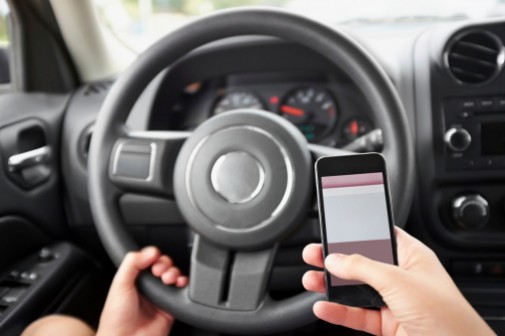Do driving-and-texting bans really work?

According to the U.S. Department of Transportation, drivers using hand-held devices are four times more likely to get into an accident causing injuries, and distracted driving caused 387,000 injuries and more than 3,000 fatalities across the country in 2011.
This has led many states, including Illinois earlier this year, to pass legislation banning cell phone use and text messaging while driving. And according to a new study in the American Journal of Public Health, the results are clear – it’s saving lives.
Researchers at the University of Alabama conducted a longitudinal panel study to examine the changes in roadway fatalities after the enactment of state texting-while-driving bans, using data between 2000 and 2010.
Their results revealed a three percent reduction in traffic fatalities among all age groups, equating to an average of 19 deaths prevented per year, in states with primary texting bans.
The results among younger drivers were the most dramatic. The researchers found that bans specifically targeting young drivers helped reduce deaths in the 15- to 21-year-old age group by 11 percent.
As for older drivers, banning handheld devices altogether produced the best results.
While primary texting bans were not associated with significant reductions in fatalities within the 21- to 64-year-old age group, there was a significant decrease in traffic fatalities in states that had implemented a total ban on all cell phone use while driving.
“We must adopt a no-tolerance attitude on this issue,” says Dr. Charles Nozicka, medical director of pediatric emergency medicine at Advocate Condell Medical Center in Libertyville, Ill. “Studies have shown that distracted driving is as dangerous as driving while intoxicated.”
Dr. Nozicka also adds a special warning to parents of teen drivers.
“It’s crucial for parents to model good behavior—so that means not trying to make just one phone call or send just one text while behind the wheel,” he says. “The strongest component of risk avoidance for distracted driving is parents’ modeled behavior.”
Related Posts
Comments
8 Comments
About the Author
health enews staff is a group of experienced writers from our Advocate Health Care and Aurora Health Care sites, which also includes freelance or intern writers.


















If you want to learn more attend this year’s Chicagoland Safety, Health and Enviornmental Conference ( http://www.chisafetyconf.org ). Sept. 22-25 at NIU campus in Naperville
It is so important for parents to be a good role model–please don’t text and drive! Show your kids that “it can wait!”
If I really need to send a message out, I have whoever is in the passenger’s seat text for me! If it’s just me, I keep my phone down until I’m where I need to be.
The bans work for me! It wasn’t so hard to not text and drive because I didn’t do it much anyway, but it’s talking on the phone while driving that was really challenging. Even when it was legal, I knew I wasn’t my best driver when I was talking and driving, so the bans really encouraged me to stop the bad behavior.
Good for you Rebecca acknowledging your behavior and re-checking yourself. Thanks for being considerate and saving lives
It would work if the bans were being enforced. People just blew it off and continue doing it and still being focused on the texting and not the driving. It’s amazing how humans have no regard for other human lives. Ok, if you want to kill yourself do it somewhere else, but not while driving.
AMEN, Mary!!!
I agree Mary, I have witnessed police driving by young people texing and driving. They give them the evil eye but do nothing. If more tickets were given, maybe it would send a message.